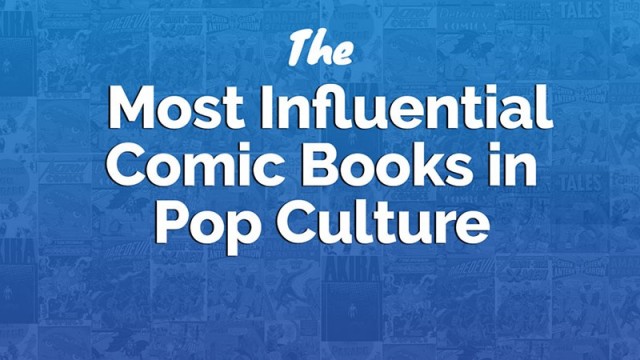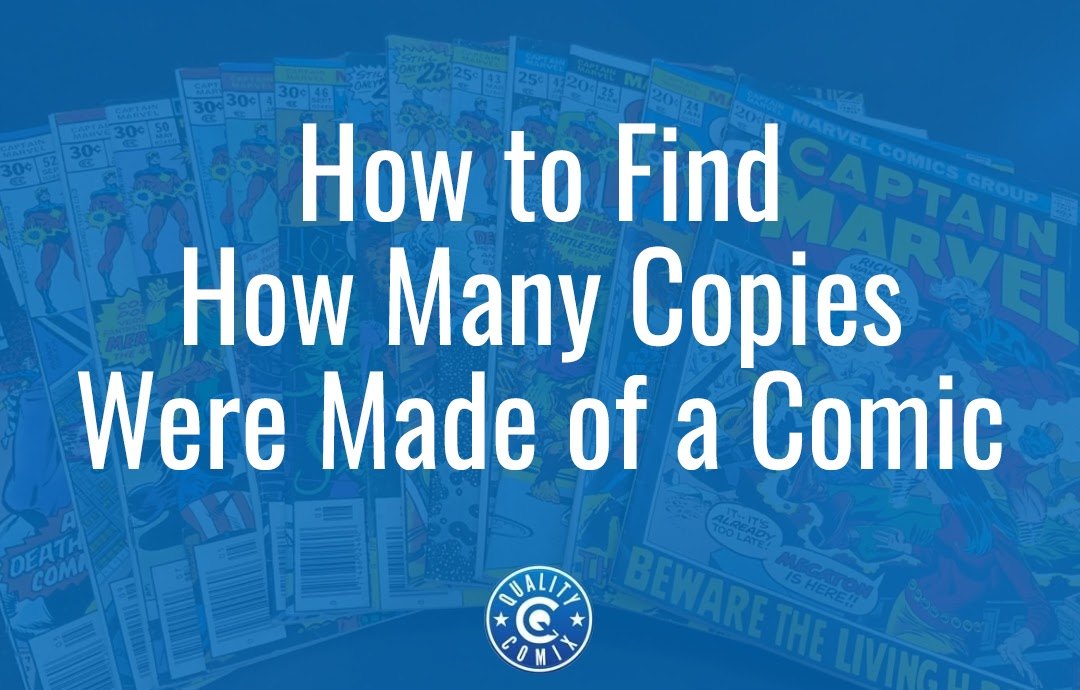
When you're thinking about comics and trying to evaluate how valuable a particular comic is likely to be, you're going to be looking at a few key attributes.
- Desirability
- Age
- Condition
- Rarity
Desirability matters less than you might think if you're patient. As long as someone is eventually interested enough in your comic, you can sell it at a price point you choose.
Age is fixed. You know how old a comic is based on when it was created, and that information is easy to look up in all but the most niche cases of hand-made indie comics with little in the way of documentation.
Condition, similarly, is relatively easy to evaluate. You can just look at a comic and see different kinds of damage, different blemishes, and more. You can determine which sorts of damage will hinder the price more and which are common or generally overlooked, or even fixable with pressing and cleaning.
Rarity, though, now that's a tricky one.
Table of Contents
What Makes a Comic Rare?
Many people, when asked about the rarity of a comic, might answer with the simple thought: it's how many copies of a comic exist. A comic with 1,000 known copies is a lot rarer than a comic with 1,000,000 known copies out there in circulation. While this is true on the surface, it's not the whole story.
The rarity of a comic is the balance of two factors: how many copies of a given comic exist and how much demand there is for that comic.
A comic with 1,000 known copies is rare, yes, but if there are only 50 people in the world who care enough about the comic to want a copy of it, anyone who wants one can probably find one relatively easily and cheaply.
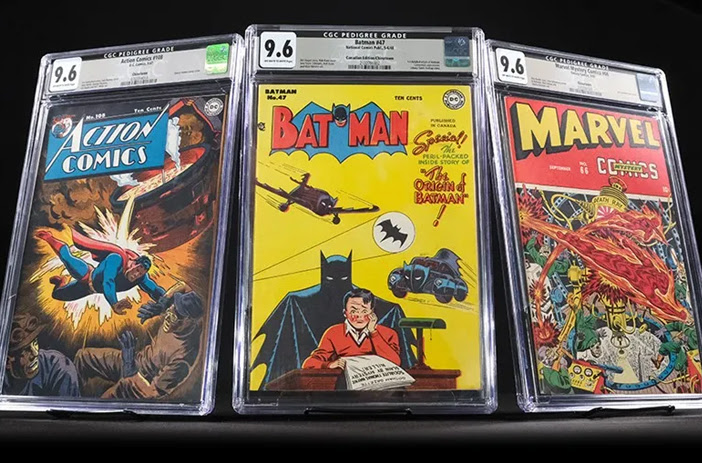
Conversely, a comic that had 1,000,000 copies made might be very rare and valuable if over a million people want a copy of that comic for their collections, so 999,999 of them are locked away in boxes, displayed on shelves, or otherwise not on the market.
In a sense, it doesn't matter how many copies of a comic there are, as much as it does how many copies of a comic are able to move.
Of course, raw numbers do still matter. It's rather unlikely for a comic to have a million dedicated collectors nailing down their copies.
How Many Copies of a Comic Exist?
If you want to get a good idea of how many copies of a given issue of a comic exist, well, you're going to have to do some investigation.
Unfortunately, there's no real way to know for sure. 99% of the time, publishers aren't publishing their sales numbers. You might find generic sales numbers, like "in 2023, DC sold over 500 million comics," but that's across every line, old and new, and may even include digital comic sales. More often, you find revenue numbers; Comics publishers, in general, sold $2 billion worth of comics in whatever year, or however you find the numbers.
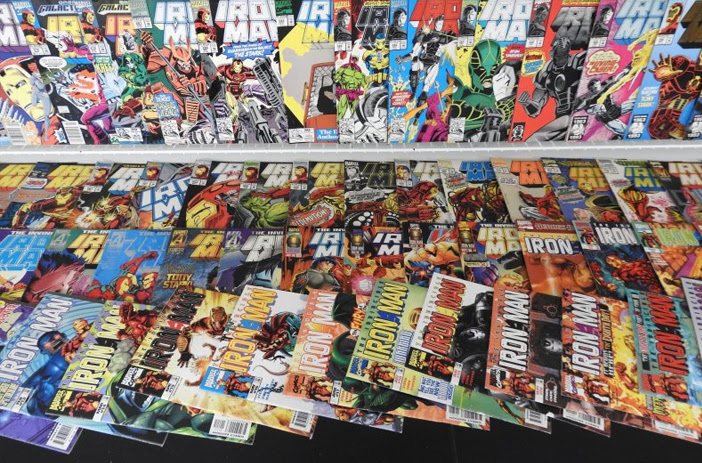
Most of the data that exists comes from third-party intermediaries. For a long time, for example, Diamond Comic Distributors were the people responsible for the logistics of bringing comics from a publisher's printing facilities to the stores that ordered them. Diamond gave out some numerical figures, but that was only a partial picture of the industry. You couldn't know how many comics were produced for direct mail, how many were printed later on, and more. Diamond recently stopped publishing sales figures at all, but there's still a lot of analysis done online by people like the good folks at Comichron.
Other times, sales figures come in through point-of-sale systems. For example, ComicHub is a piece of software used for sales and inventory management by a lot of LCSs across the country, and they track and aggregate anonymous data from their users, which allows them a glimpse inside the industry. Their data can be used for sales rankings and other analyses.
Confounding Variables and Problems with Data
There are a lot of different reasons why the information above is not reliable or useful beyond broad generalizations, comparative rankings, and trends. I can't go through every possible reason, but some of the most important ones include these.
It's always partial data. Even in the times when Diamond was the sole distributor for, say, DC's various comics, they weren't the sole distributor for all comics everywhere. Direct sales and direct mail comics don't go through the distributor and don't get counted. Alternative publishers don't go through that distributor and aren't listed, so the data isn't available. Indie comics, especially, are a lot harder to find reliable sales data for.
Orders aren't volume. The number of people who preorder a comic isn't necessarily the same as the number of people who buy it. People cancel preorders. People preorder comics in greater numbers than there are printed in an initial run or, in some cases, even at all. Sales and preorders don't always line up. Proportions can vary. There are a lot of reasons why distributor data only tells part of the story.
Sales aren't volume. If someone buys a comic, reads it, and sells it back to the LCS, and someone else buys that same comic, you now have two entries in the sale log for the comic, but only one copy of the comic existed to create those. This is more of an issue with the sales log method like ComicHub, rather than distributor numbers, but when distributors stopped providing numbers, the data we have to fall back on presents different issues.

Comics can be lost or destroyed. Something like a distributor's numbers represent one possible number of comics to exist, but over time, some of those comics are going to disappear. Some are locked away in collections and not for sale, but others may be donated to libraries, damaged enough they're thrown away, destroyed in floods or fires, or simply deteriorate over time. While this might not tangibly affect the number of copies of a comic extant for newer comics, the older a comic is, the more entropy and attrition decrease the number of comics available.
Artificial scarcity happens. A common tactic from publishers today to try to drive the collectability of a comic up when they'd otherwise print millions of copies is to make limited-run versions, variants, and other kinds of artificially restricted sales. Maybe they print a million copies of a comic, but they print a thousand copies with embossed numbers on the cover. Limited print runs are also more common in indie comics, where they're more experimental, and interest isn't predicted to be as high.
Reissued and reprints happen. When a comic is printed initially, that isn't all that can happen with it. If it turns out to be unexpectedly popular, for example, the publisher can always just order another print run to satisfy demand. After all, while the publishers do have an interest in supporting the collector's market to drive overall demand, they still want to sell as many copies as they can. After all, DC hasn't seen a dime of the sale of Action Comics #1 at record-breaking auction prices. They sold that comic once, decades ago, for ten cents, and every sale of it afterward doesn't give them another dime.
Variants and other oddities exist. A first print run might be small. Or, it might have an error with it, and it's recalled, the error copies destroyed, and a reissue printed. Or maybe they printed thousands of copies of one version of a cover and only hundreds of another. Some comics are even valuable in different ways based on the market they were printed in, with different regional pricing being more or less common. Variants are a huge deal, for better or for worse, in different cases.
Does it Matter?
At the end of the day, we all have to ask a question here. Does the specific number of copies of a comic to exist really matter?
On one hand, it does matter in a more abstract and industrial sense. Knowing how many copies of a comic are printed and ordered helps give us all an overall big-picture look at the industry. If overall numbers are declining, that can mean the industry is fading and could even be headed for a shakeup. If numbers are increasing, it could mean that the industry is in a good place and growing… or it could mean that over-printing is becoming a problem and the collectability of newer comics is lower than ever.
To an individual collector, investor, or broker, though, it doesn't really matter all that much.
The fact is, the market is largely self-regulating. Comics that have thousands of copies available are not worth much because if the price starts to rise, people will notice. They dig into their LCS inventories or their own longboxes, dig out their copies, and sell them; supply increases, demand decreases, and it balances out with the price. While ostensibly, this could be manipulated, it's fairly rare that anyone is going to buy thousands of copies of a given comic in an attempt to drive artificial scarcity, pump the price, and sell them off. It's theoretically possible but often not worth the effort.
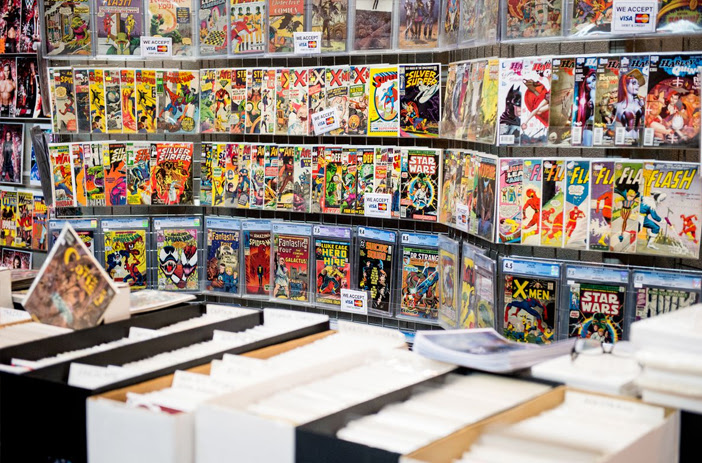
The number of copies of a comic out there matters most when the number is either very high or very low. When it's very high, scarcity is non-existent, so the price really can't go very high. That's why modern comics are generally worth so very little compared to golden and silver age comics; there are just so many more of them out there.
When it's very low, on the other hand, the only limit to the price is what people are willing to pay. There are quite a few comics from the early golden age and even earlier where the number of known copies can be counted on a single hand. It's even more common that there are more copies of a comic, but the ones graded above a 9, or even above an 8, are scarce. These might almost never come to market, or they might routinely be "available" at prices higher than all but the most dedicated collectors are willing to pay.
The numbers that tend to be more important are things like the available volume of a given comic. Hulk #181 is a sought-after comic from the 70s. It's relatively scarce and probably had a somewhat small print run, but it's not worth millions. Why not? Demand is lower, and available volume is higher. If you search eBay for it, you can find thousands of available copies ready to be bought.
Are Your Comics Scarce?
Most people, when they're asking about how many copies of a comic exist, are wondering because they want to know if the comics they have are rare. Truthfully, this isn't as important as whether or not they're in demand, and the easiest way to find that out is to look at how many are available and how many have been selling on the secondary market recently.
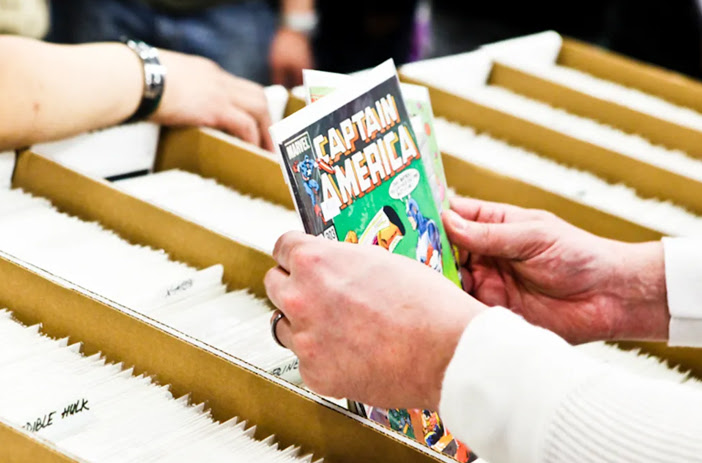
What matters most, at the end of the day, is what you want out of your comics. If you want to sell them, you need to have some idea of whether or not there's demand for them and what the price point is. That's where we come in. Here at Quality Comix, we're the leading high-end comic shop, and we deal in the scarce, the rare, and the valuable day in and day out.
Want to know how much your comics or collection is worth? That's easy! All you need to do is take a few pictures, write a brief description of what you have, and send us a message. We'll help you evaluate if you have any valuable or rare comics, what your comics are likely to be worth, and whether or not you'll be able to sell them easily or if they're worth hanging onto. If we like them, we may even offer to buy them directly, though you're under no obligation to sell them to us. Really, we just love chatting with people about their collections.

